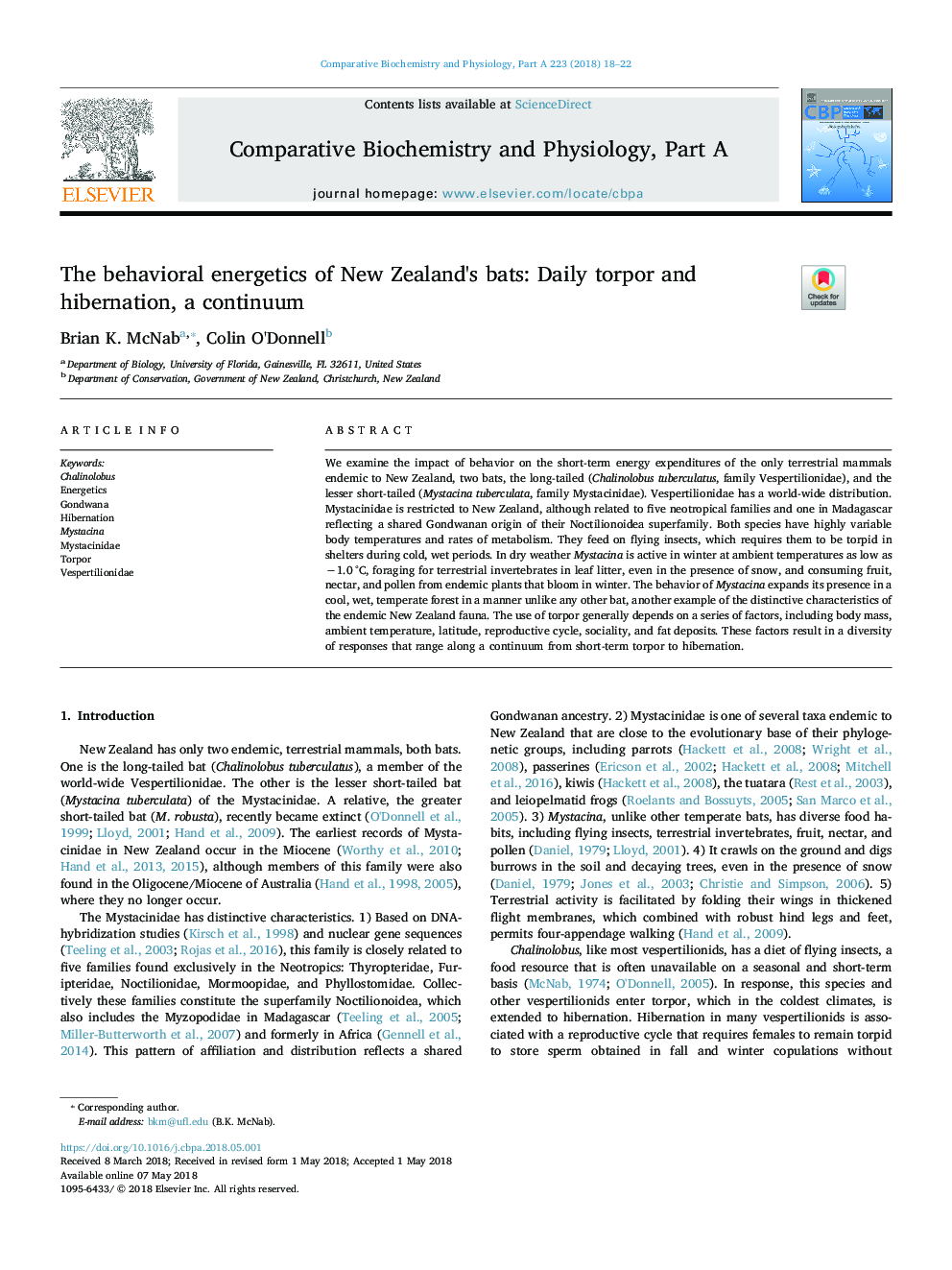| کد مقاله | کد نشریه | سال انتشار | مقاله انگلیسی | نسخه تمام متن |
|---|---|---|---|---|
| 8318098 | 1538965 | 2018 | 5 صفحه PDF | دانلود رایگان |
عنوان انگلیسی مقاله ISI
The behavioral energetics of New Zealand's bats: Daily torpor and hibernation, a continuum
ترجمه فارسی عنوان
انرژی رفتاری خفاشهای نیوزیلند: روزانه و خواب زمستانی، پیوسته
دانلود مقاله + سفارش ترجمه
دانلود مقاله ISI انگلیسی
رایگان برای ایرانیان
کلمات کلیدی
موضوعات مرتبط
علوم زیستی و بیوفناوری
بیوشیمی، ژنتیک و زیست شناسی مولکولی
زیست شیمی
چکیده انگلیسی
We examine the impact of behavior on the short-term energy expenditures of the only terrestrial mammals endemic to New Zealand, two bats, the long-tailed (Chalinolobus tuberculatus, family Vespertilionidae), and the lesser short-tailed (Mystacina tuberculata, family Mystacinidae). Vespertilionidae has a world-wide distribution. Mystacinidae is restricted to New Zealand, although related to five neotropical families and one in Madagascar reflecting a shared Gondwanan origin of their Noctilionoidea superfamily. Both species have highly variable body temperatures and rates of metabolism. They feed on flying insects, which requires them to be torpid in shelters during cold, wet periods. In dry weather Mystacina is active in winter at ambient temperatures as low as â1.0â¯Â°C, foraging for terrestrial invertebrates in leaf litter, even in the presence of snow, and consuming fruit, nectar, and pollen from endemic plants that bloom in winter. The behavior of Mystacina expands its presence in a cool, wet, temperate forest in a manner unlike any other bat, another example of the distinctive characteristics of the endemic New Zealand fauna. The use of torpor generally depends on a series of factors, including body mass, ambient temperature, latitude, reproductive cycle, sociality, and fat deposits. These factors result in a diversity of responses that range along a continuum from short-term torpor to hibernation.
ناشر
Database: Elsevier - ScienceDirect (ساینس دایرکت)
Journal: Comparative Biochemistry and Physiology Part A: Molecular & Integrative Physiology - Volume 223, September 2018, Pages 18-22
Journal: Comparative Biochemistry and Physiology Part A: Molecular & Integrative Physiology - Volume 223, September 2018, Pages 18-22
نویسندگان
Brian K. McNab, Colin O'Donnell,
